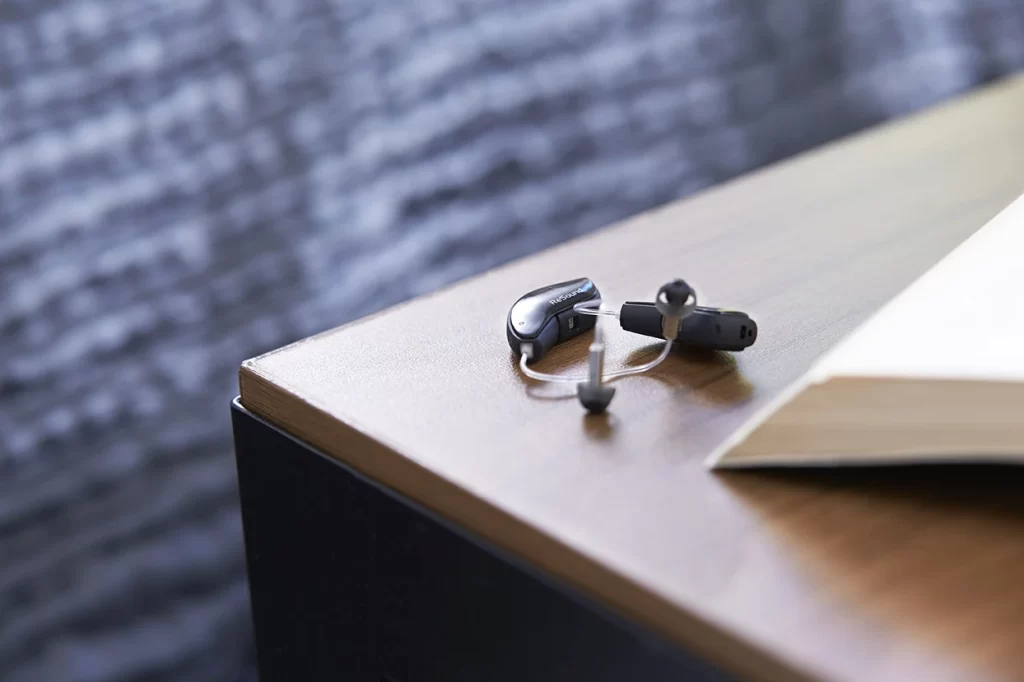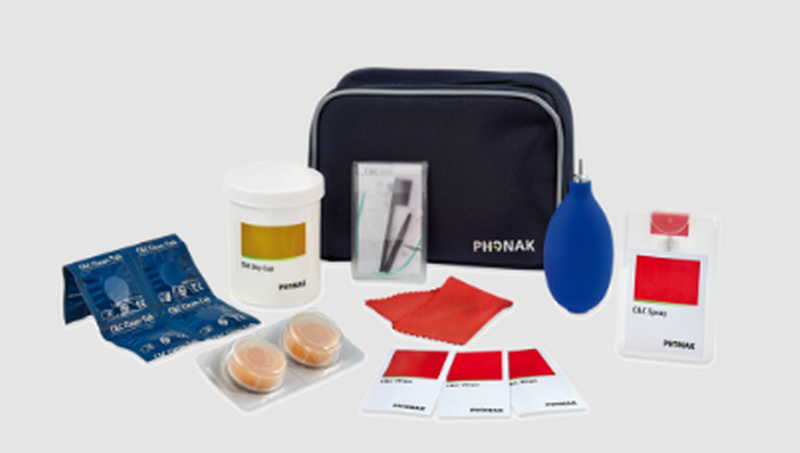How to Look After Your Hearing Aids and Keep Them Clean

If you want your hearing aids to last, it is very important that you look after them as best as you can. This means regularly cleaning and drying them to ensure moisture and dirt does not get inside the hearing aid.
Cleaning your hearing aid will depend on the style of hearing aid;
With all aids, wipe the part that goes into your ear (mould or dome) every night when you take them out using a tissue or soft cloth, to remove any dirt or excess wax on the outside. Once per week, give the part that goes into your ear an extra clean with some cleaning spray or wipes. Spray the cleaning liquid onto a soft cloth or tissue, not directly onto the device, as this might get moisture inside the aid. You can also use a little brush/cleaning tool to brush away excess wax on any part of the hearing aid.
Do not keep your hearing aids in the bathroom, and make sure you do not wear them in the shower, as the moisture can damage the hearing aids. Use a drying tablet and container once per week to ensure that aid/s do not get a build-up of moisture which can damage them. If you accidentally get the hearing aids wet, put them straight into the drying container and leave them in there for at least a few hours. Also try to avoid getting any excess makeup or hairspray on the aids.
Behind the ear (BTE): can have a “slim” hollow tube which goes from the part that sits behind your ear, into your ear, and ends with a dome or mould. This tube can be removed (pulled or unscrewed) from the main hearing aid. Sometimes this tube can get wax stuck inside it. If this happens, remove the tube and remove the dome from the end and push a small wire through the hollow tube to push the wax out.
BTE’s may also have a thicker tube which goes to a custom mould. Sometimes this tube can also get blocked with wax and needs to be cleaned. This can be done by removing the tube from the hearing device, and using a blue puffer to push the wax out with air. The mould itself can also be cleaned using a special cleaning tablet in water. But it is very important that you have removed the hearing device from the mould/tube prior to submerging the mould and tube into the solution!
Receiver in Canal (RIC): These devices have a wire (receiver) which goes from the hearing aid into your ear. This wire can only be removed by the audiologist. However, at the end of the wire, under the dome (or mould), there is a wax filter. These can be changed if they are blocked with wax and your audiologist will show you how and provide you with spares. How often these need to be changed is dependent on the person as everybody makes a different amount of wax. Some people need to change them weekly, others monthly and others even less so!
Custom hearing aids: Wax filters can also be found on custom hearing aids (aids that do not have a part that goes behind your ear). Wax filters do come in different types so your audiologist will be able to show you which ones you need and how to change them.
Cleaning products and tools are provided by your audiologist, and your audiologist will show you how to use them when you get your hearing aids fitted. If you forget or need a reminder of how to clean the hearing aids or use the tools, please do not hesitate to contact your audiologist for help! You can see in the picture below, all the types of cleaning tools/products available. You may not receive all of these things from your audiologist, as they might not be relevant to your hearing aids.

Batteries: You also need to make sure you look after your hearing aids when it comes to batteries. When the hearing aid is not in use, ensure you open the battery door to save the battery. If you will not be using the hearing aid for a long time (for example if you go away and decide not to take the hearing aids with you) then it is important to remove the battery completely from the hearing aid to avoid the battery corroding inside the hearing aid. Used batteries can be recycled, and you are more than welcome to bring them to us at Knox Audiology and we can recycle them for you.
If you have rechargeable hearing aids, it is important to keep them in the charging unit (turned on/connected to power) when you are not wearing or using the hearing aids. If you will not use the devices for some time, you can turn the hearing aids off manually. Normally this will involve holding down one of the buttons at the back of the hearing aid, until you see a red light. To turn it back on you do the same, until you see a green light. Ask your audiologist to show you how to do this.
